Commercial printing technology has come a long way since its inception. The printing industry has undergone a significant transformation over the years, with technology playing a crucial role in the evolution of the industry.
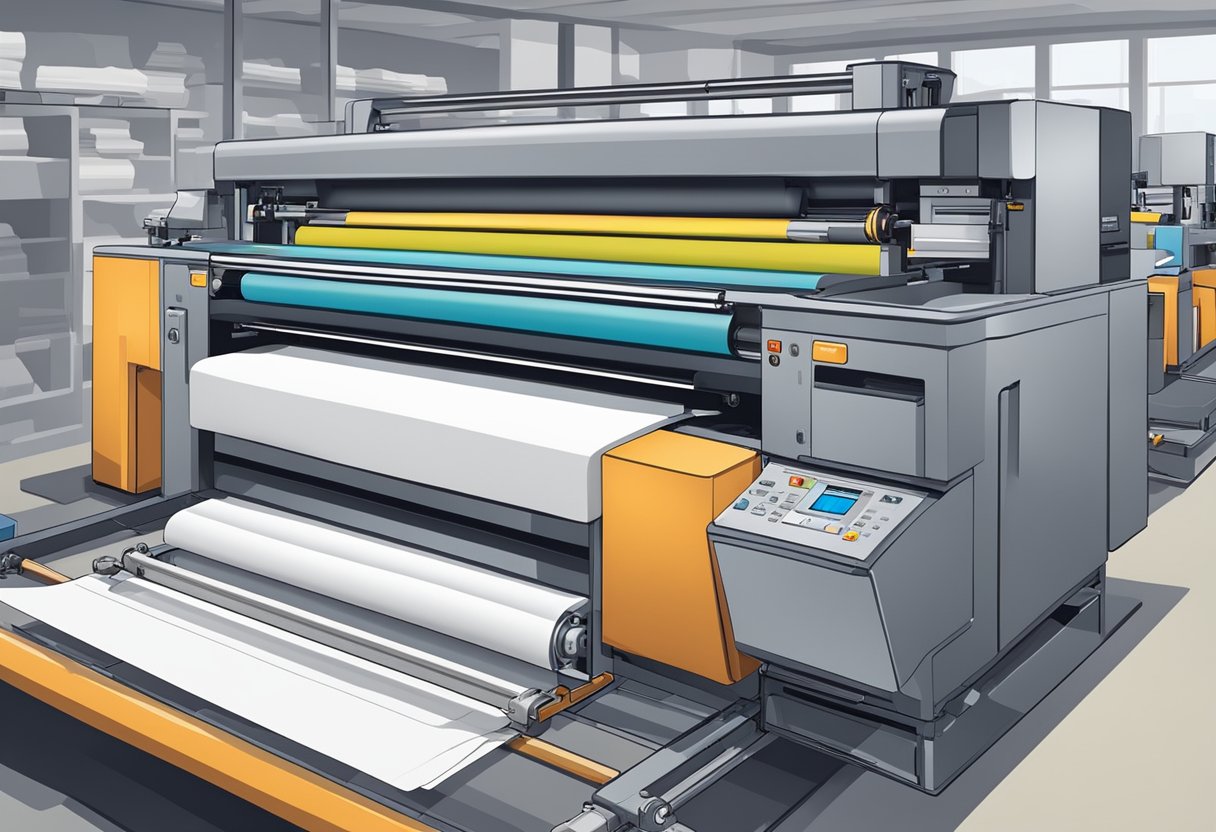
Commercial printing technology refers to the use of advanced printing techniques and equipment to produce high-quality printed materials such as brochures, flyers, business cards, and other marketing collateral.
The printing process involves various techniques, including offset printing, digital printing, and flexography, among others. These techniques are used to print on a wide range of materials, including paper, cardboard, plastic, and metal.
The printing industry is constantly evolving, with new technologies and innovations being introduced to improve productivity, efficiency, and quality. The use of environmentally sustainable printing practices has also become a priority for many printing companies. As the demand for customized and variable data printing continues to grow, the industry is expected to witness further technological advancements in the future.
Key Takeaways
- Commercial printing technology has undergone significant transformation over the years, with digital technology playing a crucial role in the evolution of the industry.
- The printing process involves various techniques, including offset printing, digital printing, and flexography, and is used to print on a wide range of materials.
- The printing industry is constantly evolving, with new technologies and innovations being introduced to improve productivity, efficiency, and quality, while also prioritizing environmentally sustainable printing practices.
Overview of Commercial Printing Technology
Commercial printing technology has come a long way since its inception, and continuous innovation has led to the development of various printing techniques. The commercial printing industry has undergone a significant transformation in the last few decades, with the introduction of digital printing technology.
This section provides an overview of commercial printing technology, including its history, evolution, and a comparison of analog and digital printing.
History and Evolution of Printing Technology
Printing technology has been around for centuries, and it has evolved significantly over time. The first printing press was invented in the 15th century, and it revolutionized the way books were printed. However, it was not until the 19th century that the first commercial printing press was introduced.
The offset printing press was invented in 1904, and it quickly became the most popular printing technique in the commercial printing industry. The offset printing press uses a series of rollers to transfer ink onto paper, making it a highly efficient and cost-effective printing method.
Comparison of Analog and Digital Printing
Analog printing, such as offset printing, has been the primary printing method used in the commercial printing industry for many years. However, the introduction of digital printing technology has changed the landscape of the industry.
Digital printing uses inkjet technology or toner to print images directly onto paper, eliminating the need for printing plates. Digital press technology has improved significantly in recent years, making it a viable option for high-speed, high-volume production.
One of the significant advantages of digital printing is its automation capabilities. Digital presses can be programmed to print a specific number of copies, and they can also be set up to automatically adjust the color and other settings. This automation has led to increased productivity and reduced production costs in the commercial printing industry.
Printing Processes and Techniques
Printing technology has evolved significantly over the years, with advancements in digital printing and inkjet technology leading the way. There are several printing processes and techniques used in commercial printing, including offset printing, digital printing, and inkjet printing.
Offset Printing Methodology
Offset printing is a traditional printing process that involves transferring ink from a printing plate to a rubber blanket and then onto the printing surface. This process is ideal for high-volume printing jobs and produces high-quality prints with sharp images and vibrant colors. Offset printing is commonly used for printing books, brochures, and magazines.
Digital Printing Innovations
Digital printing is a newer printing technology that involves printing digital images directly onto a variety of substrates. This process is ideal for short-run printing jobs and produces high-quality prints with excellent color accuracy and consistency. Digital printing is commonly used for printing business cards, flyers, and posters.
View Main Graphics Commercial Printing in a full screen map
Inkjet Technology Advancements
Inkjet printing is a popular printing technology that uses tiny nozzles to spray ink onto the printing surface. This process is ideal for printing high-quality images with fine details and vibrant colors. Inkjet technology has advanced significantly in recent years, with improvements in printhead technology and UVgel ink, which offers excellent color grip and durability.
Print Materials and Production
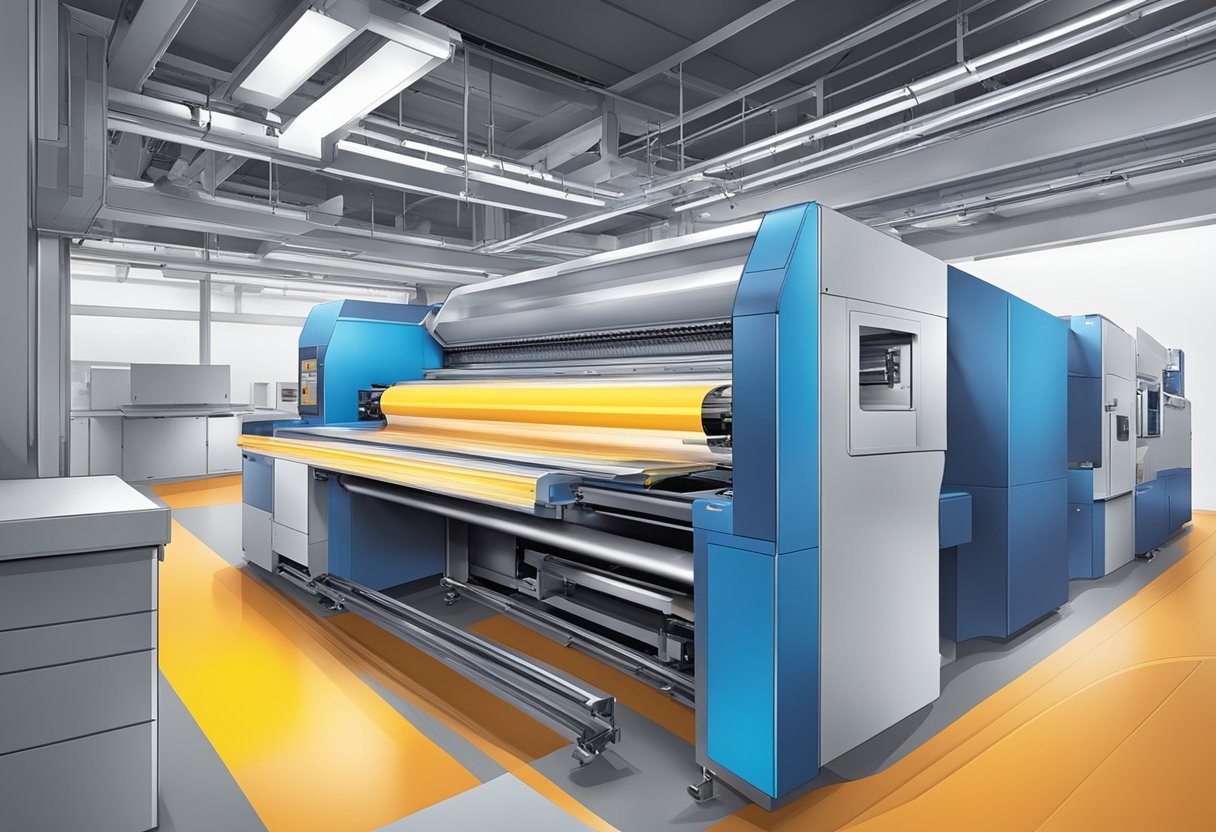
When it comes to commercial printing technology, selecting the right print materials is crucial to achieving the desired results. This section will cover the various print materials and production techniques used in commercial printing.
Paper Types and Selection
Paper selection is an important factor in commercial printing. The type of paper used can affect the overall look and feel of the final product.
There are many different types of paper available, including glossy, matte, and textured finishes. The weight of the paper can also vary, with lighter weights being used for brochures and catalogs, and heavier weights for books and manuals.
When selecting paper for a project, it is important to consider the intended use of the final product. For example, a photobook may require a higher quality paper with a glossy finish, while a poster may require a heavier weight paper with a matte finish.
Ink Types and Their Properties
Ink selection is also an important factor in commercial printing. The type of ink used can affect the color, durability, and overall quality of the final product.
UV inks are a popular choice in commercial printing due to their ability to dry quickly and resist fading.
When selecting ink for a project, it is important to consider the desired color and finish of the final product. Different types of ink can also be used for different materials, such as metallic ink for a brochure or catalog.
Finishing Techniques
Finishing techniques are used to add a final touch to the printed product. These techniques can include embossing, foil stamping, and laminating.
Embossing is used to create a raised texture on the paper, while foil stamping adds a metallic finish. Laminating can be used to add durability and protect the printed product.
When selecting finishing techniques, it is important to consider the intended use of the final product and the desired look and feel. Different finishing techniques can be used to create a unique and professional final product.
Quality and Image Control
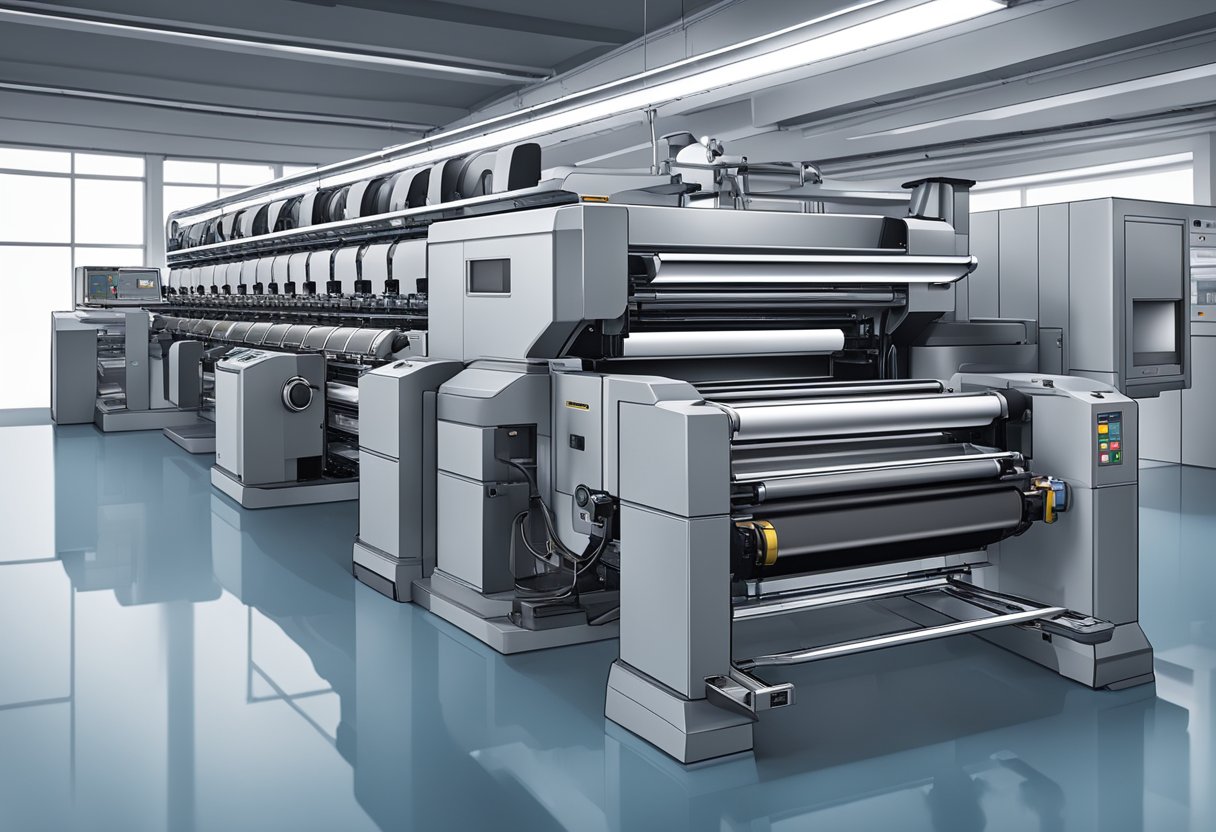
Commercial printing technology has come a long way in terms of quality and image control. Achieving high image quality is essential for any printing job, especially when it comes to commercial printing.
Achieving High Image Quality
One of the key factors in achieving high image quality is the type of printing technology used. Commercial printers use various technologies such as offset, digital, and flexography.
Each technology has its own strengths and weaknesses, and it is important to choose the right one for the job.
Another important factor is the quality of the printing materials used. High-quality paper, ink, and toner can make a significant difference in the final output.
It is also important to ensure that the printing equipment is well-maintained and calibrated regularly to ensure consistent quality.
Color Management and Accuracy
Color management and accuracy are crucial in commercial printing. With the right color management tools and software, it is possible to achieve accurate and consistent color reproduction across different printing jobs.
Commercial printers use various color management tools such as color profiles, spectrophotometers, and colorimeters to ensure accurate color reproduction. It is also important to ensure that the printing equipment is calibrated regularly to maintain color accuracy.
Commercial Printing Applications
Commercial printing technology has numerous applications across various industries. From producing books and magazines to creating marketing materials, packaging, and specialty items, commercial printing is an essential aspect of modern business.
Books and Magazines Production
Commercial printing technology has revolutionized the way books and magazines are produced. With the ability to print high-quality images and text, commercial printers can produce books and magazines in large quantities at a faster rate than traditional printing methods.
This has made it easier for publishers to meet the demands of their readers while reducing costs.
Marketing and Direct Mail
Marketing and direct mail are two areas where commercial printing technology has made a significant impact. With the ability to print personalized marketing materials, commercial printers can help businesses reach their target audience more effectively.
Direct mail campaigns can be customized with names, addresses, and other personal details, making them more engaging and memorable.
Packaging and Specialty Items
Commercial printing technology has also transformed the packaging industry. With the ability to print on a variety of materials, including plastics, metal, and glass, commercial printers can create custom packaging designs that stand out on store shelves.
Specialty items such as promotional products, apparel, and sports equipment can also be printed with high-quality images and text, making them more appealing to consumers.
View Main Graphics Commercial Printing in a full screen map
Productivity and Efficiency
Commercial printing technology has come a long way since its inception. With the advent of modern technology, the printing industry has witnessed a significant improvement in productivity and efficiency. In this section, we will explore some of the ways that modern commercial printing technology has improved productivity and efficiency in the industry.
High-Speed Printing Capabilities
One of the most significant advancements in commercial printing technology is the ability to print at high speeds. Modern printing machines are equipped with high-speed print heads that can print thousands of pages per minute. This high-speed printing capability has revolutionized the printing industry.
Now, it’s possible to print large volumes of documents quickly and efficiently.
Reducing Downtime in Printing Operations
Downtime in printing operations can be costly and time-consuming. Modern commercial printing technology has significantly reduced downtime by incorporating features such as automatic paper feeding and advanced error detection systems.
These features ensure that printing operations run smoothly and efficiently, reducing the need for manual intervention and minimizing the risk of downtime.
Automation in the Printing Industry
Automation has become an essential part of modern commercial printing technology. With the use of advanced software and hardware, printing operations can be automated, reducing the need for manual intervention.
This automation has significantly improved the productivity and efficiency of the printing industry, making it possible to print large volumes of documents quickly and accurately.
Environmental Sustainability in Printing
Sustainable Printing Practices
As environmental concerns continue to grow, the printing industry is taking steps to reduce its impact on the environment. One of the ways that commercial printing technology is becoming more sustainable is through the use of sustainable printing practices.
This includes practices such as using soy-based inks, which are more environmentally friendly than traditional petroleum-based inks. Additionally, printers are recycling paper waste and using eco-friendly printing methods.
Another sustainable printing practice is using digital printing technology. Digital printing technology uses less ink and paper than traditional printing methods, resulting in less waste. Furthermore, digital printing technology allows for on-demand printing, which reduces the need for large print runs, thus reducing waste.
Eco-Friendly Materials and Inks
In addition to sustainable printing practices, the use of eco-friendly materials and inks is becoming more prevalent in the printing industry. For example, latex ink is a water-based ink that is more environmentally friendly than traditional solvent-based inks.
Latex ink emits fewer volatile organic compounds (VOCs) and is easier to dispose of than solvent-based inks.
UV inks are another eco-friendly option. UV inks are cured with ultraviolet light instead of heat, which reduces energy consumption and emissions. Additionally, UV inks are more durable and have a longer lifespan than traditional inks, reducing the need for reprints and thus reducing waste.
Customization and Variable Data Printing
Commercial printing technology has come a long way in recent years, and one of the most exciting developments has been the ability to customize printed products in ways that were once impossible. Customization and variable data printing (VDP) have opened up new possibilities for businesses and individuals alike, allowing them to create personalized products that are tailored to their specific needs.
Variable Data Printing for Personalized Products
Variable data printing is a technique that allows for the customization of printed materials on a large scale. With VDP, each printed piece can be personalized with unique text, images, or other data.
This makes it ideal for creating personalized products such as direct mail pieces, invitations, and promotional materials.
VDP works by using specialized software to merge a database of information with a print layout. The software then generates a unique print file for each individual piece, with the variable data inserted as needed.
This allows for a high degree of personalization, with each piece tailored to the recipient’s specific needs and interests.
Short Run Printing and Custom Orders
Another benefit of customization and VDP is the ability to produce short runs of printed materials. In the past, printing a small number of items was often prohibitively expensive, as the cost of setup and printing plates made it difficult to justify.
However, with digital printing technology and VDP, it is now possible to produce small print runs economically.
This makes customization and VDP ideal for businesses and individuals who need small quantities of printed materials, such as custom invitations, business cards, or promotional materials. With short run printing, it is possible to produce only the number of items needed, without having to worry about excess inventory or waste.
Technology Integration and Innovations

Digital Press Advancements
View Main Graphics Commercial Printing in a full screen map
The advancements in digital press technology have revolutionized the commercial printing industry. Digital presses have become faster, more reliable, and capable of producing high-quality prints with exceptional color accuracy.
With the advent of new technologies, digital presses can now handle a wide range of substrates and offer a variety of finishing options.
One such example of digital press technology is the ProStream 1000. This digital press offers high-speed printing with exceptional image quality and color consistency.
It is capable of printing on a wide range of substrates, including coated, uncoated, and textured papers. The ProStream 1000 also offers a variety of finishing options, such as inline perforation, punching, and binding.
Inkjet Nozzle Technology and Maintenance
Inkjet nozzle technology has come a long way in recent years. With advancements in nozzle design and maintenance, inkjet printers can now produce high-quality prints with minimal downtime due to nozzle clogging.
Nozzle clogging can be a significant issue in commercial printing, leading to costly downtime and reduced print quality.
Inkjet printers now feature advanced nozzle maintenance systems that can detect and correct clogs before they become a problem. These systems can also automatically clean nozzles during printing, reducing the need for manual cleaning.
Elevated Printing Technology
Elevated printing technology, also known as raised printing or thermography, is a printing technique that creates a raised effect on printed materials. This technique is achieved by adding a special powder to the ink that is then heated to create a raised effect.
Elevated printing technology is commonly used in business cards, invitations, and other high-end printed materials. It adds a tactile element to printed materials, making them stand out and feel more luxurious.
Commercial Printing Market Dynamics
Supply Chain and Vendor Management
The commercial printing industry is heavily reliant on a complex supply chain that includes paper mills, ink manufacturers, and equipment suppliers. Any disruptions or delays in the supply chain can have a significant impact on the industry’s ability to meet customer demand and deadlines.
Therefore, effective vendor management is crucial for commercial printers to ensure a steady and reliable supply of materials and equipment.
To manage their vendors effectively, commercial printers need to establish strong relationships with their suppliers and negotiate favorable terms for pricing, delivery, and quality control.
They also need to monitor their inventory levels closely and maintain accurate records to avoid stockouts or overstocking.
Customer Demand and Market Trends
The commercial printing industry is driven by customer demand and market trends. As technology advances and new printing techniques emerge, customers are increasingly demanding high-quality, personalized, and innovative print products.
To remain competitive, commercial printers need to stay abreast of market trends and adapt their services to meet evolving customer needs.
One of the most significant trends in the commercial printing industry is the shift towards digital printing. Digital printing offers greater flexibility, faster turnaround times, and lower costs compared to traditional offset printing.
As a result, many commercial printers are investing in digital printing equipment and software to expand their services and meet customer demand.
Another trend in the industry is the growing demand for sustainable and eco-friendly printing practices. Many customers are becoming more environmentally conscious and are seeking out printers that use eco-friendly materials and processes.
Commercial printers that can offer sustainable printing solutions are likely to gain a competitive advantage and attract more customers.
Print Services Management
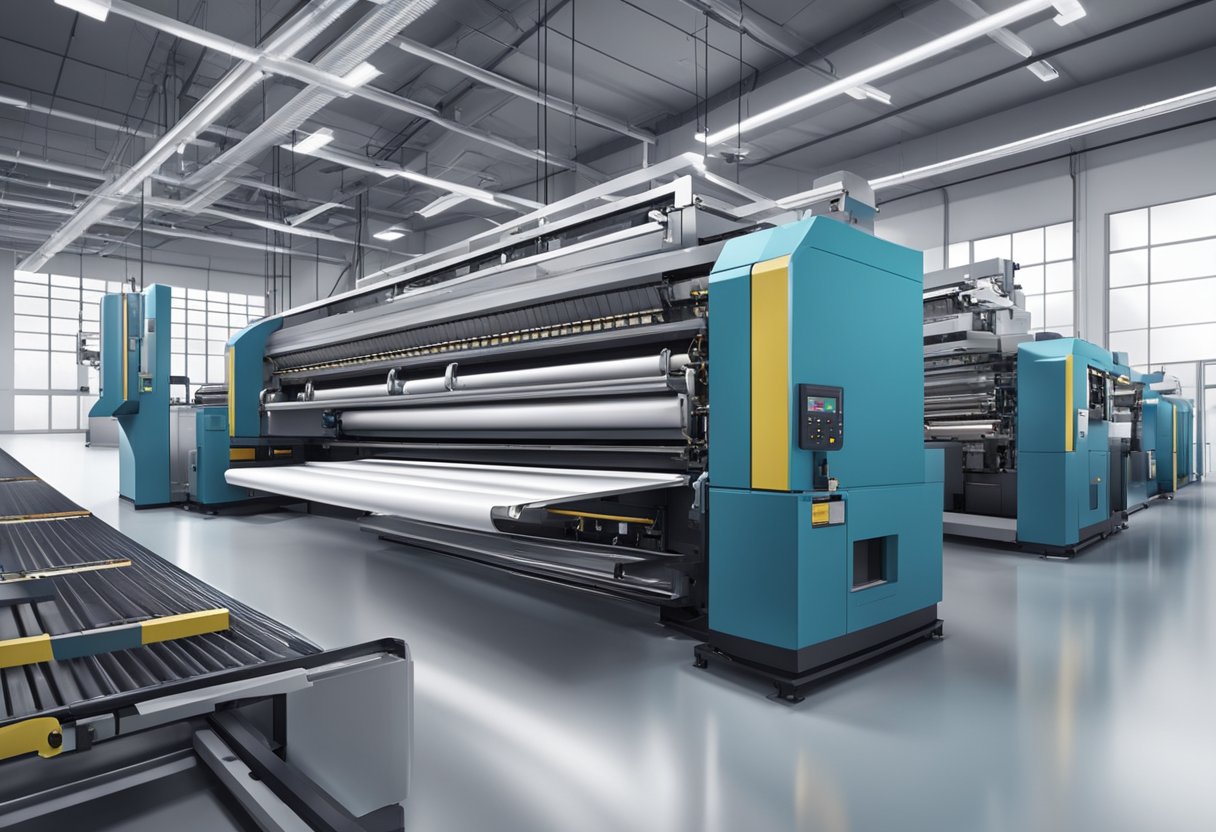
Comprehensive Print Management Solutions
In today’s business world, print services have become a critical aspect of any company’s operations. To ensure the smooth functioning of print services, companies require a comprehensive print management solution.
Such a solution should cover all aspects of print services, including print procurement, print production, and print distribution.
A comprehensive print management solution should also provide real-time visibility into print jobs, enabling companies to track their print jobs from start to finish.
This visibility helps companies to identify and address any issues that may arise during the print process, ensuring that the print jobs are completed on time and within budget.
Cost-Effective Strategies for Print Services
Print services can be a significant expense for companies, especially those that require a large volume of print jobs. Therefore, companies need to adopt cost-effective strategies for print services to reduce their overall print costs.
One of the most effective cost-saving strategies for print services is to implement a print management solution that optimizes print jobs.
Such solutions can reduce print waste, improve print quality, and optimize print production, resulting in significant cost savings for companies.
Another cost-effective strategy for print services is to outsource print jobs to a reputable print service provider.
Outsourcing print jobs can help companies to reduce their overall print costs, as print service providers can leverage economies of scale to offer competitive pricing.
Durability and Longevity of Print Products
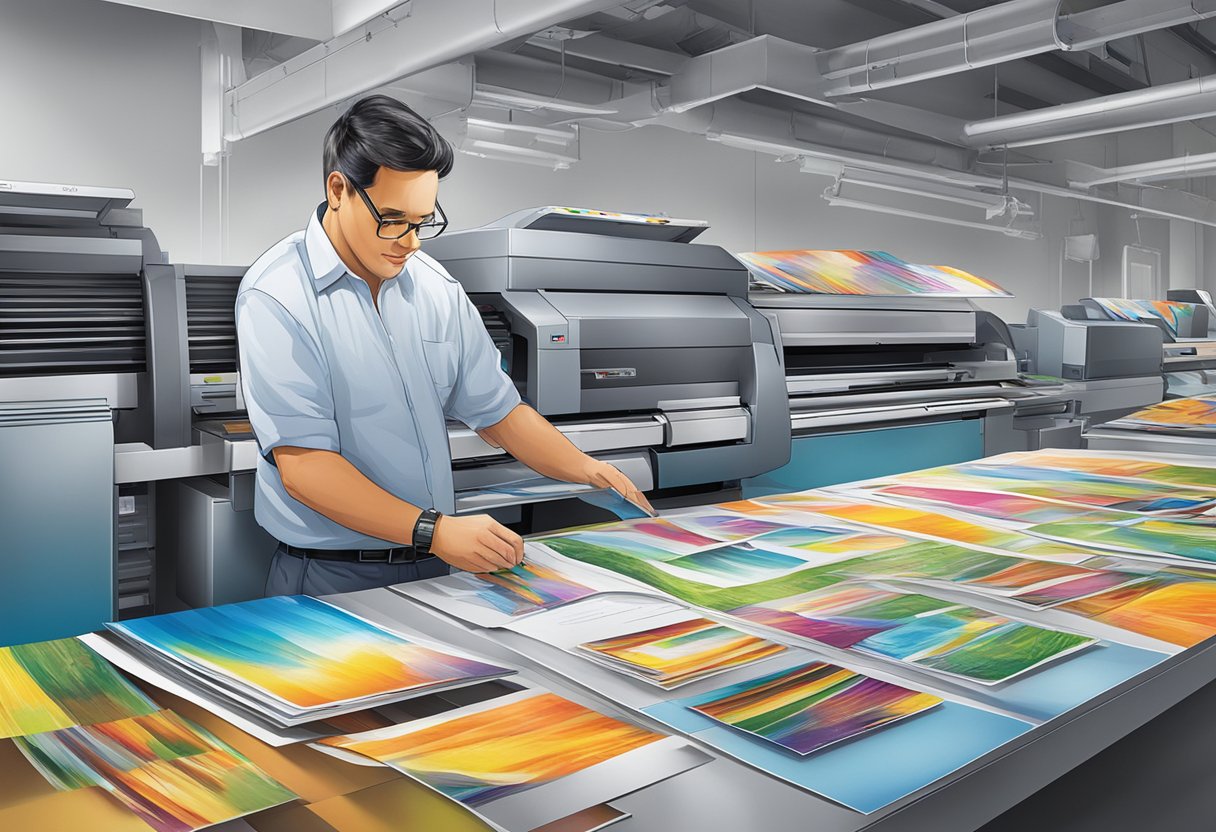
When it comes to commercial printing technology, durability and longevity are two important factors to consider. Print products that are designed to last longer and withstand harsh environmental conditions are highly sought after, especially for outdoor use.
High Durability Printing for Outdoor Use
High durability printing is a printing technique that produces prints that can withstand harsh environmental conditions such as rain, wind, and sunlight. This technique involves the use of special printing inks, coatings, and substrates that are designed to withstand these conditions.
One of the most common techniques used for high durability printing is UV printing. This technique involves the use of UV-curable inks that are cured using UV light, resulting in prints that are highly resistant to fading, scratches, and water damage.
UV printing is commonly used for outdoor signage, banners, and billboards.
Another technique used for high durability printing is solvent printing. This technique involves the use of solvent-based inks that are highly resistant to fading and water damage.
Solvent printing is commonly used for outdoor banners, vehicle wraps, and billboards.
Longevity of Print Materials
The longevity of print materials is an important factor to consider when choosing a printing technique. Print materials that are designed to last longer can save businesses time and money in the long run.
One of the most commonly used print materials for high durability printing is vinyl. Vinyl is a durable and flexible material that is highly resistant to fading, water damage, and scratches.
It is commonly used for outdoor signage, banners, and vehicle wraps.
Another commonly used print material for high durability printing is polyester film. Polyester film is a durable and tear-resistant material that is highly resistant to water damage, fading, and scratches.
It is commonly used for outdoor banners, backdrops, and trade show displays.
Frequently Asked Questions
What are the primary steps involved in the print production process?
The print production process involves several steps. The first step is prepress, which includes designing, typesetting, and preparing the files for printing.
The next step is printing, where the image is transferred onto the printing surface. The final step is post-press, which includes folding, binding, and finishing the printed material.
Which commercial printing technique is most prevalent in the industry today?
Offset printing is the most prevalent commercial printing technique in the industry today. It is a versatile printing technique that can handle a wide range of printing projects, from small to large-scale.
It is also known for its high-quality output and cost-effectiveness.
How do different types of print technology compare in terms of quality and efficiency?
Different types of print technology have their own unique advantages and disadvantages. For example, digital printing is known for its speed and flexibility, while offset printing is known for its high-quality output and cost-effectiveness.
It is important to consider the specific needs of the printing project when selecting a printing technology.
Can you list some leading companies that specialize in commercial printing technology?
Some leading companies in the commercial printing technology industry include HP, Canon, Xerox, and Epson. These companies offer a range of printing solutions, from digital to offset printing, and are known for their high-quality products and innovative technologies.
What are the key differences between various printing machine types used in commercial printing?
There are several types of printing machines used in commercial printing, including digital, offset, and flexographic printing machines. The key differences between these machines include the printing process, the printing surface, and the type of ink used.
It is important to choose the right type of printing machine based on the specific needs of the printing project.
How has commercial printing technology evolved over recent years?
Commercial printing technology has evolved significantly. Digital printing and advancements in offset printing technology have been introduced. These advancements have allowed for faster printing speeds, improved quality, and greater flexibility in printing projects. Additionally, there has been a shift towards more sustainable and eco-friendly printing practices.


